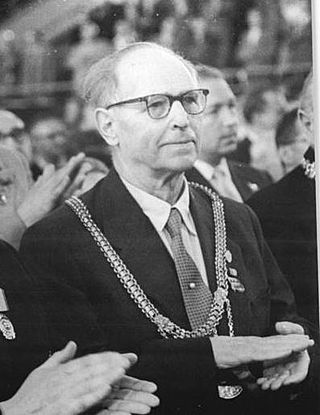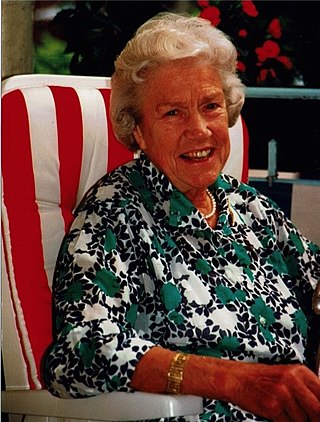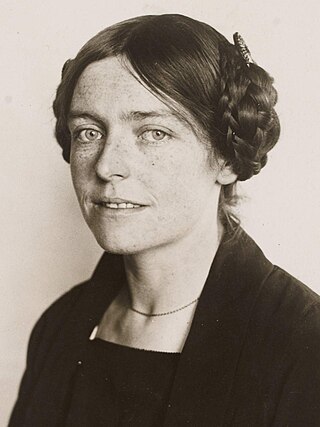Related Research Articles

Technische Universität Berlin is a public research university located in Berlin, Germany. It was the first German university to adopt the name "Technische Universität".

Terence James MacSwiney was an Irish playwright, author and politician. He was elected as Sinn Féin Lord Mayor of Cork during the Irish War of Independence in 1920. He was arrested by the British Government on charges of sedition and imprisoned in Brixton Prison. His death there in October 1920 after 74 days on hunger strike brought him and the Irish Republican campaign to international attention.

The Gottfried Wilhelm Leibniz Prize, or Leibniz Prize, is awarded by the German Research Foundation to "exceptional scientists and academics for their outstanding achievements in the field of research". Since 1986, up to ten prizes have been awarded annually to individuals or research groups working at a research institution in Germany or at a German research institution abroad. It is considered the most important research award in Germany.

The Berlin-Brandenburg capital region is one of the most prolific centers of higher education and research in the world. It is the largest concentration of universities and colleges in Germany. The city has four public research universities and 27 private, professional and technical colleges (Hochschulen), offering a wide range of disciplines. Access to the German university system is tuition free.

Mary MacSwiney was an Irish republican activist and politician, as well as a teacher. MacSwiney was thrust into both the national and international spotlight in 1920 when her brother Terence MacSwiney, then the Lord Mayor of Cork, went on hunger strike in protest of British policy in Ireland. Mary, alongside her sister-in-law Muriel MacSwiney kept daily vigil over Terence and effectively became spokespeople for the campaign. Terence MacSwiney would ultimately die in October 1920, and from then on Mary MacSwiney acted as an unofficial custodian of his legacy, becoming a dogged and zealous advocate of Irish Republicanism. Following a high-profile seven-month tour of the United States in 1921 in which she and Muriel raised the profile of the Irish independence movement, Mary was elected to Dáil Eireann amidst the ongoing Irish War of Independence. During debates of the Anglo-Irish Treaty, a proposed peace deal between the British and the Irish, MacSwiney was amongst the most outspoken advocates against it. During the ensuing Irish Civil War, MacSwiney supported the Anti-Treaty IRA and was imprisoned for it, resulting in her partaking in two hunger strikes herself.

Max Volmer was a German physical chemist, who made important contributions in electrochemistry, in particular on electrode kinetics. He co-developed the Butler–Volmer equation. Volmer held the chair and directorship of the Physical Chemistry and Electrochemistry Institute of the Technische Hochschule Berlin, in Berlin-Charlottenburg. After World War II, he went to the Soviet Union, where he headed a design bureau for the production of heavy water. Upon his return to East Germany ten years later, he became a professor at the Humboldt University of Berlin and was president of the East German Academy of Sciences.

Werner Hartmann was a German physicist who introduced microelectronics into East Germany. He studied physics at the Technische Hochschule Berlin and worked at Siemens before joining Fernseh GmbH. At the end of World War II, he and his research staff were flown to the Soviet Union to work on their atomic bomb project; he was assigned to Institute G. In 1955, he arrived in the German Democratic Republic (GDR); in the same year, he founded and became the director of the VEB Vakutronik Dresden, later VEB RFT Meßelektronik Dresden. In 1956, he completed his Habilitation at the Technische Hochschule Dresden and also became a professor for Kernphysikalische Elektronik there. In 1961, he founded the Arbeitsstelle für Molekularelektronik Dresden (AME). He was awarded the National Prize of GDR in 1958. In 1974, he was removed from his positions, significantly demoted, and sent to work as a staff scientist at the VEB Spurenmetalle Freiberg. Hartmann had been the object of security investigations by the Stasi for some time; while he was investigated at length and repeatedly interrogated, the alleged charges were politically motivated and no trial ever took place. The Werner-Hartmann-Preis für Chipdesign is an industrial award given in Hartmann's honor for achievement in the field of semiconductors.
Walter Friedrich Karl Weizel was a German theoretical physicist and politician. As a result of his opposition to National Socialism in Germany, he was forced into early retirement for a short duration in 1933. He was a full at the University of Bonn, from 1936 to 1969. After World War II, he helped to establish the Jülich Research Center, and he was a state representative of the Social Democratic Party of Germany.

Wilhelm Heinrich Westphal was a German physicist. From 1918, he was a professor at the University of Berlin. During the period 1922 to 1924, he was also an expert adviser to the Prussian Ministry of Science, Arts and Culture. From 1928, he was simultaneously a professor at the University of Berlin and at Technische Hochschule Berlin. His position at the former ended when it fell in the Russian sector at the close of World War II, but he achieved emeritus status at the latter in 1955.
Heino Finkelmann is a retired German chemist in the area of liquid-crystalline elastomers.

Ivan Nikolov Stranski was a Bulgarian and later a German physical chemist who is considered the father of crystal growth research.
Gerhard Borrmann was a German physicist.

Sabina Jeschke is a German university professor for information sciences in mechanical engineering at the RWTH Aachen University. As of 10 November 2017, she was named member of the management board of Deutschen Bahn AG for digitalization and technology. She is also the director of the Cybernetics Lab IMA/ZLW & IfU. In the summer semester of 2017, she is on sabbatical leave to develop her research in the area of artificial consciousness, and is involved in building a think tank "Strong Artificial Intelligence" at the Volvo Car Corporation in Göteborg. Since May 2015, Jeschke has been a member of the supervisory board of Körber AG, since April 2012 chairman of the board of VDI Aachen. Beginning of January 2023 she took on an additional position as a senior advisor at Arthur D. Little.
Stefanie Schüler-Springorum is a German historian.

Máire MacSwiney Brugha was an Irish activist who was the daughter of Terence MacSwiney and niece of Mary MacSwiney. As well as an activist she was also an author and is now regarded as a person of historical importance.

Barbara Ruth Albert is a German chemist and rector of the University of Duisburg-Essen. She was Professor of Solid State Chemistry at the Eduard-Zintl-Institute for Inorganic and Physical Chemistry of the Technische Universität Darmstadt. From 2012 to 2013 she was the president of the German Chemical Society.

Brigitte Sarry was a German chemist and a professor at Technische Universität Berlin.
Brigitte Eisenmann was a German chemist and a professor at the Technische Universität Darmstadt. She was the first woman professor for Chemistry at the Technische Universität Darmstadt. Together with Herbert Schäfer, she extended the definition of Zintl phases.

Muriel MacSwiney was an Irish republican and left-wing activist, and the first woman to be given the Freedom of New York City. She was the wife of Terence MacSwiney, mother of Máire MacSwiney Brugha and sister-in-law of Mary MacSwiney. The 1920 hunger strike of her husband Terence became an international cause célèbre, and following his death she became one of the most high profile Irish republican activists in the world, widely campaigning in the United States throughout the early 1920s. Following the defeat of the Anti-Treaty IRA in the Irish Civil War in 1923, Muriel never again lived in Ireland and instead embarked upon a bohemian life on the European continent. However, this led to a falling out with her daughter Máire, resulting in a bitter custody battle when Máire attempted to return to Ireland and ultimately total estrangement after 1934. MacSwiney spent most of the 1930s in Paris, France and from 1940 onwards lived in England, where she still occasionally involved herself in left-wing and republican causes.
Ulrich Hofmann was a German chemist known for his study of clay minerals and the pioneering use of electron microscopes in the study of carbonaceous materials.
References
- 1 2 GmbH, Institut Kirchhoff Berlin (2016). "Institut Kirchhoff Berlin GmbH". Institut Kirchhoff Berlin GmbH (in German). Retrieved 2019-01-19.
- 1 2 3 4 5 6 7 8 9 10 11 12 13 14 15 "Chemikerinnen" (PDF). www.gdch.de. Retrieved 2019-01-12.
- ↑ "Gedenkseite von Hildegard Hess". trauer.tagesspiegel.de (in German). Retrieved 2019-01-19.
- 1 2 3 Boeck, Gisela (2003). "Unabhängig ein Leben lang". Nachrichten aus der Chemie (in German). 51 (1): 67–68. doi:10.1002/nadc.20030510133. ISSN 1868-0054.
- ↑ Kunert‐Kirchhoff, Jutta; Kirchhoff, Erhard (2014). "Frau Dr. Hildegard Hess". Lebensmittelchemie. 68 (5): 116. doi:10.1002/lemi.201490043. ISSN 1521-3811.
- 1 2 Johnson, Jeffrey A. (1998-12-01). "German women in chemistry, 1925–1945 (part II)". NTM International Journal of History & Ethics of Natural Sciences, Technology & Medicine. 6 (1): 65–90. doi:10.1007/BF02914207. ISSN 1420-9144. PMID 27518333. S2CID 33178544.
- ↑ [1] [2] [3] [4] [5] [6]
- ↑ Brugha, Máire MacSwiney (2014). History's daughter : a memoir from the only child of Terence MacSwiney. Dublin: The O'Brien Press. ISBN 9781847176233. OCLC 872992030.